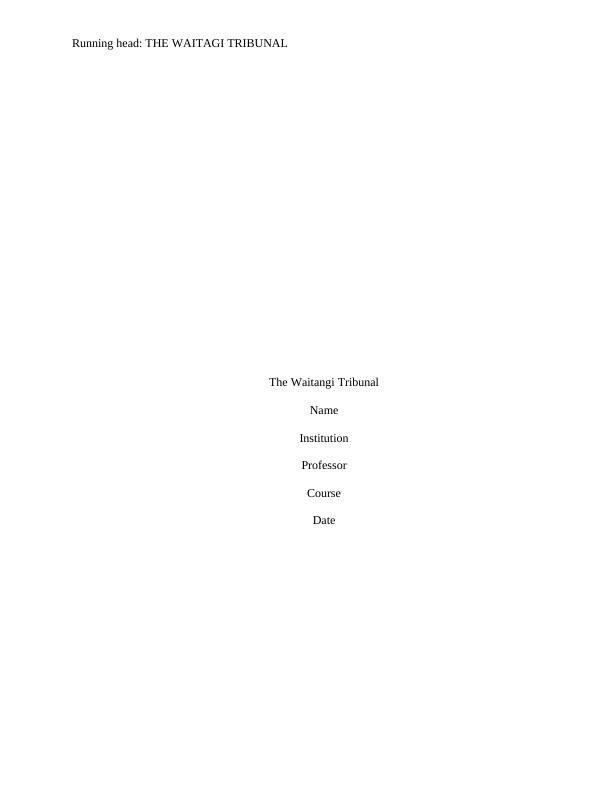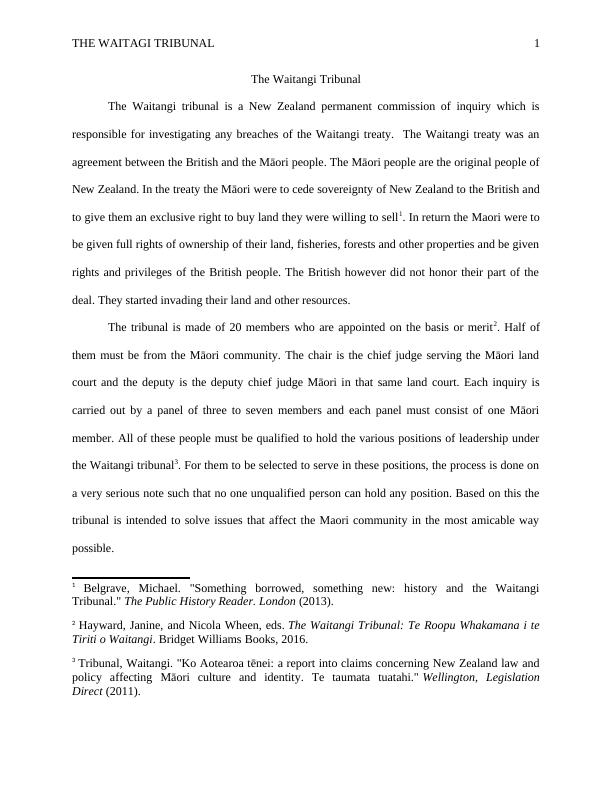The Waitangi Tribunal
10 Pages3299 Words77 Views
Added on 2023-01-23
About This Document
The Waitangi Tribunal is a New Zealand permanent commission of inquiry responsible for investigating breaches of the Waitangi treaty. This article explores the history of the tribunal, its role in resolving issues affecting the Māori community, and the process it follows. It also highlights the Waikato tanui settlement as an example of a complex case that was successfully resolved.
The Waitangi Tribunal
Added on 2023-01-23
ShareRelated Documents
End of preview
Want to access all the pages? Upload your documents or become a member.
Effectiveness of the Waitangi Tribunal- Paper
|6
|1567
|202
The Treaty in the Workplace - Desklib
|12
|2617
|183
Socio-cultural and Historical Factors Influencing Health and Wellbeing
|10
|2317
|216
Understanding the Treaty of Waitangi Principles in Legislation: A Historical Perspective
|4
|363
|439
Workplace Culture and Compliant Behaviours
|27
|868
|91
Treaty of Waitangi Assignment
|10
|2109
|290



